Search results
Create the page "Linear function" on this wiki! See also the search results found.
- ...rete cosine transform is a [[linear]], invertible [[function (mathematics)|function]] ''F'' : '''R'''<sup>''N''</sup> <tt>-></tt> '''R'''<sup>''N''</sup> or10 KB (1,689 words) - 18:26, 30 July 2019
- The example of the C++ call below calculates the expansion of function Let \(F\) be smooth even function quickly decaying at infinity; let \(N\) be large natural number.5 KB (682 words) - 18:27, 30 July 2019
- [[File:ShokopPlotAT.png|400px|thumb|[[Shoko function]] and two its asimptitics]] [[Shoko function]] describes the growth of the [[fluence]] of pulse of light in the homogene10 KB (1,507 words) - 18:25, 30 July 2019
- [[Trappmann function]] is defined with ...re elementary function. The Trappmann function is example of [[holomorphic function]] without [[fixed point]]s, suggested in year 2011 by [[Henryk Trappmann]]9 KB (1,320 words) - 11:38, 20 July 2020
- ArcTra is inverse of the [[Trappmann function]]; \(\mathrm{ArcTra}=\mathrm{tra}^{-1}\), where [[ArcTra]] can be expressed through the [[Tania function]] as follows:10 KB (1,442 words) - 18:47, 30 July 2019

File:DoyaplotTc.png [[Doya function]] with parameter unity of real argument, $y=T(x)=\mathrm{Doya}_1(x)$ The linear approximation in vicinity of zero $y=T'(0) x =\mathrm e x~$(881 × 1,325 (95 KB)) - 09:43, 21 June 2013
File:TetPlotU.png ...aphic of tetration $y\!=\!\mathrm{tet}(x)$ looks similar to that of linear function ...tetration $y\!=\!\mathrm{tet}(x)$ looks similar to that of the exponential function $y\!=\!\exp(x)$.(838 × 2,088 (124 KB)) - 08:53, 1 December 2018- ...t is assumed that the inverse function \(Q=P^{-1}\) exists. Then, for some function \(f\), its conjugate \(g\) is expressed with ..., the operations \(P\) and \(f\) commute, and \(P\) can be "drawn through" function \(f\), for example,6 KB (921 words) - 18:46, 30 July 2019
- ...rate_of_linear_fraction]] (or [[iteration of linnet friaction]]) refers to function [[Iterate]] of a [[linear fraction]] can be expressed with also some linear fraction. This article describes this expression.13 KB (2,088 words) - 06:43, 20 July 2020
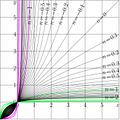
File:Fracit20t150.jpg [[Iterate of linear fraction]]; [[Category:Elementary function]](1,466 × 1,466 (463 KB)) - 08:36, 1 December 2018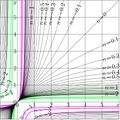
File:Fracit10t150.jpg [[Iterate of linear fraction]]; [[Category:Elementary function]](1,466 × 1,466 (564 KB)) - 08:36, 1 December 2018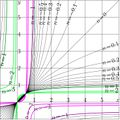
File:Fracit05t150.jpg [[Iterate of linear fraction]]; [[Category:Elementary function]](1,466 × 1,466 (441 KB)) - 08:36, 1 December 2018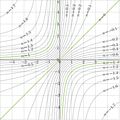
File:Frac1zt.jpg [[Iterate]]s of function $T(z)=-1/z$ The non-integer iterates of function $T$ are evaluated using the superfunction(2,089 × 2,089 (734 KB)) - 08:36, 1 December 2018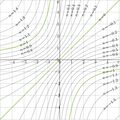
File:Frac2zt.jpg [[Iteration]] of function $T(z)=-4/z$. [[Category:Iterate of linear fraction]](2,089 × 2,089 (716 KB)) - 21:47, 29 August 2013- [[File:F1xmapT.jpg|300px|thumb|[[Complex map|Map]] of function \(T\) by (1) at \(u\!=\!0\), \(v\!=\!-1\), \(w\!=0\)]] [[Linear fraction]] is meromorphic function that can be expressed with5 KB (830 words) - 18:44, 30 July 2019
- [[Linear function]] is function that can be represented in form [[Superfunction]] \(F\) for the linear function \(T\) by (1) can be written as follows:2 KB (234 words) - 18:43, 30 July 2019
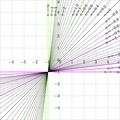
File:Itelin125T.jpg Iterates of the linear function [[Category:Linear function]](2,088 × 2,088 (893 KB)) - 08:38, 1 December 2018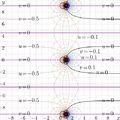
File:Fz2z1mapT.jpg [[Complex map]] of function [[Category:Linear fraction]](4,175 × 4,175 (1.57 MB)) - 08:36, 1 December 2018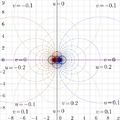
File:Gz2z1mapT.jpg [[Complex map]] of function [[Category:Abel function]](4,175 × 4,175 (1.67 MB)) - 08:37, 1 December 2018
File:2014.12.26rubleDollar.png with function daju24 defined below in C++: \begin{verbatim} \rm Linear &227.323 - 0.583872 x &\! 10.52733 &\! 13.15973\\(1,502 × 651 (246 KB)) - 08:26, 1 December 2018